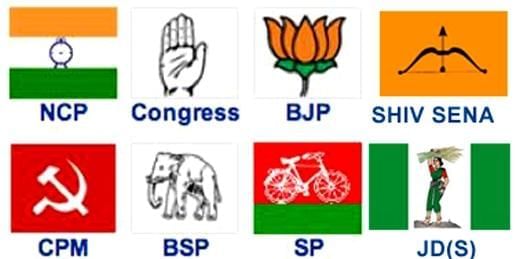Class 10 Exam > Class 10 Notes > Social Studies (SST) Class 10 > Mnemonics: Political Parties
Mnemonics: Political Parties | Social Studies (SST) Class 10 PDF Download
1. Introduction to Political Parties
Mnemonic: PARTY
- P - Puts people together with shared goals.
- A - Aims to control government policies.
- R - Represents different social groups.
- T - Ties democracy to party actions.
- Y - Yields voter choices in elections.
Explanation: "PARTY" shows why political parties are important for democracy.
2. Role of Political Parties
Mnemonic: ROLE
- R - Represents people’s interests.
- O - Offers policies for public issues.
- L - Leads by picking election candidates.
- E - Executes government plans.
Explanation: "ROLE" lists what parties do in democracy.
3. Functions of Political Parties
Mnemonic: FUNCTION
- F - Fields candidates for elections.
- U - Unites views into policies.
- N - Navigates laws through party influence.
- C - Creates governments.
- T - Takes opposition roles.
- I - Influences public opinions.
- O - Opens government access for citizens.
- N - Nurtures voter choices.
Explanation: "FUNCTION" covers how parties work in democracy.
4. How Many Parties Should We Have?
Mnemonic: SYSTEM
- S - Supports many parties in democracy.
- Y - Yields one-party rule like China.
- S - Shows two-party systems like USA.
- T - Touts India’s multi-party system.
- E - Enables coalitions for diversity.
- M - Matches system to country’s needs.
Explanation: "SYSTEM" compares different party systems.
5. National Parties in India
Mnemonic: NATION
- N - Names six national parties.
- A - Adds AAP for clean governance.
- T - Touts BSP for Dalits, minorities.
- I - Includes BJP for Hindutva.
- O - Offers CPI-M for socialism.
- N - Notes INC for secularism.
Explanation: "NATION" lists India’s main national parties.

6. Challenges to Political Parties
Mnemonic: CHALLENGE
- C - Concentrates power with top leaders.
- H - Hinders fair party decisions.
- A - Allows favoritism to friends, family.
- L - Limits new leaders’ rise.
- L - Leans on money, muscle power.
- E - Erodes voter choice with similar policies.
- N - Notes leaders switching parties.
- G - Gives unfair candidate picks.
- E - Excludes fresh ideas.
Explanation: "CHALLENGE" lists problems in political parties.
The document Mnemonics: Political Parties | Social Studies (SST) Class 10 is a part of the Class 10 Course Social Studies (SST) Class 10.
All you need of Class 10 at this link: Class 10
|
66 videos|614 docs|79 tests
|
FAQs on Mnemonics: Political Parties - Social Studies (SST) Class 10
| 1. What are the main roles of political parties in a democracy? |  |
Ans. Political parties play several crucial roles in a democracy, including representing diverse interests of the public, facilitating political participation, and providing a platform for political debate. They also help in forming governments, influencing legislation, and holding the government accountable to the citizens.
| 2. What functions do political parties serve? |  |
Ans. Political parties serve various functions such as candidate selection, policy formulation, and mobilization of voters. They also engage in political education, promote public awareness about political issues, and act as a link between the government and the people, ensuring that the voices of the electorate are heard.
| 3. How many political parties are ideal for a democratic system? |  |
Ans. The ideal number of political parties can vary based on the context of the society. Generally, a multi-party system is considered beneficial as it represents a wider range of interests and viewpoints. However, too many parties can lead to fragmentation, making governance challenging. A balance that allows for healthy competition and representation without chaos is often sought.
| 4. What are the major national parties in India? |  |
Ans. Major national parties in India include the Indian National Congress (INC), the Bharatiya Janata Party (BJP), and several others like the Communist Party of India (CPI) and the Bahujan Samaj Party (BSP). These parties have significant influence over national politics and contribute to the shaping of policies and governance in the country.
| 5. What challenges do political parties face today? |  |
Ans. Political parties face numerous challenges, including issues related to corruption, internal conflicts, and the need for transparency. Additionally, they struggle with maintaining party unity, addressing voter apathy, and adapting to changing political landscapes, including the rise of social media and new forms of political engagement.
Related Searches
















